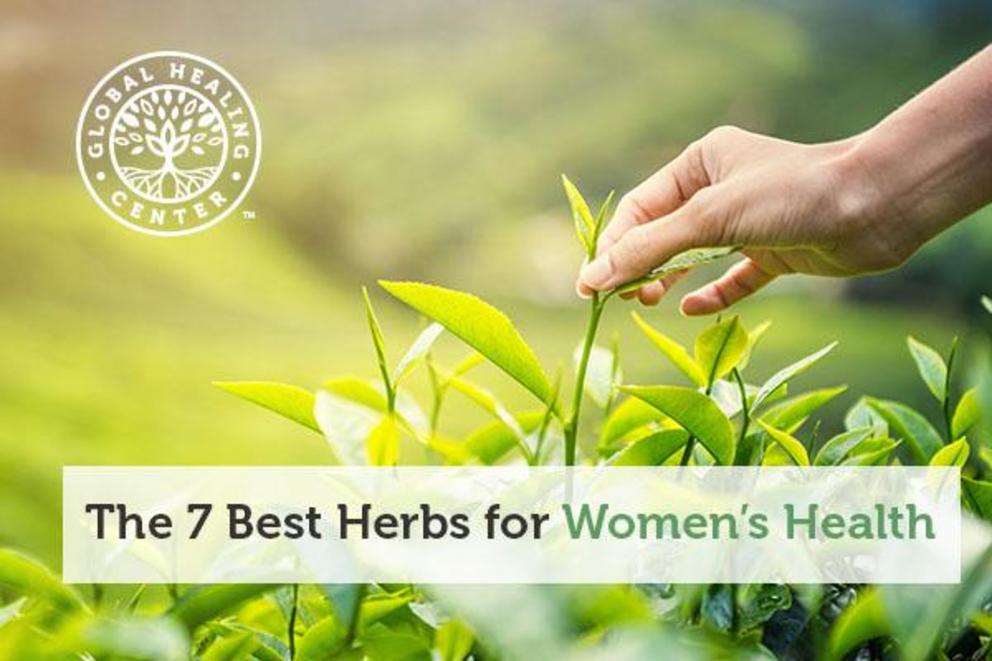The seven best herbs for women’s health
Herbs are widely used by people all over the world, mostly by those seeking alternatives or adjuncts to traditional pharmaceuticals. While no one herb will solve every health issue, the research shows that specific chemicals within certain herbs have the power to affect biological function. Herbs for women’s health have been researched extensively over the past few decades, with many showing promise for improving libido, supporting energy levels, and elevating mood.
The Top 7 Herbs for Women’s Health
Many scientists believe that specific chemicals isolated from plant materials and then extracted provide the most benefit to human health. Still, the whole herb, when used in conjunction with other herbs that provide similar chemical constituents and/or health benefits, is equally as effective. Here are some of the top herbs, extracted or otherwise, that have shown benefit to female health.
1. Muira puama
Muira puama is also known as ‘potency wood,’ and for very good reason. One study evaluating over 200 women found that the bark and root of muira puama significantly stimulated libido. [1] Over 65% of women in the study had better sexual satisfaction and orgasm intensity. Muira puama may also be helpful for increasing motivation for sex, supporting energy for day-to-day activities, and stress reduction. [2]
2. Ashwagandha
Ashwagandha is an ancient Indian herb that is said to support female reproduction and libido. The herb has been used for centuries to combat stress in women and men alike. Ashwagandha specifically targets the endocrine system and encourages hormonal balance. One study with over 50 menopausal women looked into the effects of supplementing with ashwagandha and found a significant decline in symptoms such as anxiety, hot flashes, and mood. [3] Ashwagandha has been used to support good mood for centuries, and research is beginning to find that the plant may play a powerful role in combating mental and emotional stress. [4] This makes ashwagandha a potent tool against mood swings.
3. Tribulus terrestris
Tribulus terrestris is also used for supporting hormonal balance, and research hints at its role for boosting female libido. Tribulus has plenty of research behind it for supporting libido in both men and women. An important study showed that tribulus improved desire for intercourse in 49 out of 50 female participants. [5] A recent study from 2014 found that female desire, arousal, and satisfaction is greatly improved following tribulus supplementation. [6] The herb may also combat mood swings commonly experienced during the menstrual period. Similar in action as kava kava, tribulus terrestris may positively improve mood and reduce stress and anxiety. [7]
4. Maca
Maca root is a popular herbal tool commonly used by men to support healthy hormone levels; however, women also report great benefits balancing hormonal levels with maca. While studying the root for its potential weight loss benefits, researchers observed that women enjoyed a significant reduction in common menopausal symptoms, such as hot flashes, night sweats, and depressed mood. [8] Another similar study found beneficial effects of maca supplementation on menopause symptoms. [9] Supporting healthy libido in women is also a benefit of using maca. One important study found that supplementation with maca was effective for combating sexual dysfunction in women, particulary after taking SSRI, a commonly-prescribed antidepressant. Throughout the study, women enjoyed improvement in sexual satisfaction with three grams of maca per day. [10]
5. Avena Sativa
Natural aphrodisiacs have been used successfully for thousands of years, with avena sativa being no exception. Also referred to as ‘oat straw,’ avena sativa is a powerful natural aphrodisiac, and recent research is validating its common use. [11] Oats may also support bone health, which is important because osteoporosis is more common in women than it is in men. Avena sativa is rich in calcium, a nutrient that plays an important role – along with vitamin D and vitamin K – in bone density. Oat straw increases levels of luteinizing hormone in rats, a hormone that is crucial for stimulating cell growth. This may help initiate bone cell production, possibly supporting bone health. [12]
6. Catuaba
The catuaba tree was first utilized by the Tupi Indians in Northern Brazil, who brewed the leaves to make an aphrodisiac tea. Traditional cultures have used catuaba bark for a wide range of benefits, but its potent aphrodisiac qualities is perhaps its most popular application. Catuaba bark contains the chemical yohimbine, the active compound that provides a stimulatory effect. [13]
7. Suma
Usually referred to as South American Ginseng, suma is often used to support stamina. Natives in the Amazon have looked toward Suma root for aiding libido in women, and research confirms this ancient belief. Some research also suggests that suma root may be helpful for supporting female fertility by balancing hormone levels. This is especially important today as the world becomes increasingly overwhelmed with hormone disruptors. [14] Research shows that suma root can be helpful for encouraging estradiol-17 beta, an estrogen hormone produced in women during reproduction years, further improving hormone balance. [15]
Supplementing With These Herbs
Herbs are an excellent complementary approach to an overall healthy lifestyle, and as you can see above, research supports it as a powerful way to support female health. Many of the above herbs are found in Women's Hormone Balance, carefully paired with other similar organic herbs that support physical drive and function. Avoiding environmental endocrine disruptors, like plastics and pesticides, can also be a great way to protect your hormones. Getting enough sleep, staying physically active, and receiving an optimum level of sunlight exposure are also excellent methods you can use to keep hormones running smoothly.
For full references please use source link below.

